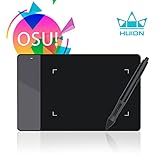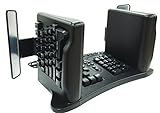er*go*nom*ic (er-ga-‘na-mik) adj: allowing people and the things they use to communicate in the best, most efficient, and most comfortable way possible.
You do your work inside. You aren’t on your feet all day and don’t lift something heavy. You’ve gotten away from the harshest aspects of most human labor. Despite this, you are exhausted at the end of the day.
You have nagging aches and pains that you don’t want to bring up with your doctor. If you do, the doctor will give you some similarly ambiguous advice: relax, don’t overwork yourself, and get some rest. If that doesn’t work, you could be a hypochondriac or a whiner. Or maybe your belongings are attacking you. Perhaps you’ve been putting up with a worn-out old mattress in the bedroom, an office chair that won’t let you sit up straight, and a computer screen that your bifocals fail to read.
You bought a desk and a file cabinet that are perfectly matched in color and design, but you had no idea how distracting ordinary furniture can be if the only consideration is matching style and color. There is a reading lamp, chair, bed, and possibly even a keyboard and desk made specifically for you somewhere in the world. This book will teach you where to look for them.
From the Back Cover
You bought a desk and a file cabinet that are perfectly matched in color and design, but you had no idea how distracting ordinary furniture can be if the only consideration is matching style and color.
There is a reading lamp, chair, bed, and possibly even a keyboard and desk made specifically for you somewhere in the world. This book will teach you where to look for them.
This trade paperback is jam-packed with sound advice and plain common sense. It explains how to design our homes and offices to accommodate the human body, with all of its shortcomings and amazing abilities. Ergonomic Living adheres to its own advice, which states that shape should come after purpose and usage.
The book is divided into two sections: home and workplace. How to Enter Your Home, How to Relax, and The Inner Circle are among the eleven chapters. Each presents a series of short, well-designed modules: The Deafening Kitchen, Wiring and Cables, Effective Ambient Lighting, and Choosing the Right Pillow. The photography and drawings are fantastic.
Pros:
- 1. Time Management
- Become more creative
- Less stressful environment
- Enhance productivity
Cons:
- 1. Strains your eyes
- Puts extra pressure onto employees/yourself
- Can’t get the work done properly
Ways to Create User-Friendly Office Environments
There are multiple factors that influence how productive workers are, but recent research indicates that one of the most important influences on employee productivity and performance is user-friendly office design. In other words, where people live has a significant impact on how they work.
According to Gallup’s 2014 State of the Global Workplace Study, 51% of workers are disengaged at work, with nearly a fifth (17.5%) saying they are deliberately disengaged.
That’s a lot of money and efficiency wasted. Simple changes to the workspaces and user-friendly office design ideas will boost employee productivity and revenue.
Incorporating Top User-Friendly Office Design Trends
Anything from technological solutions to floor plans to furniture to paint colors plays a role in creating a user-friendly office environment. Does it seem to be a lot of work? Don’t be discouraged. Many of the most common office design trends can be integrated into the current workspaces without undergoing a significant and costly renovation.
- Hide the Wires
Bundling wires and covering them under tables, as well as developing an effective filing and storage system for personal desk clutter, will help make workspaces appear more structured and user-friendly.
Investing in new technologies and incorporating office technology will reduce the need for various devices and communication points like docking stations, which can clog up a desk.
- Be Flexible
Huddle rooms, conference breakout areas, and individual workspaces are just some of the uses for multipurpose spaces. Here, furniture plays a significant role.
Oval-shaped office desks make it easier for four to six people to meet, effectively converting someone’s office into an on-demand meeting space.
- Update the Aesthetic
A user-friendly office is more than just the furniture and equipment that employees need to perform their duties. Paint, fabric, and texture are all design elements that influence productivity.
Using a variety of materials in your architecture and design, such as recycled wood and exposed concrete, will help to create a positive and productive atmosphere.
- Be Interactive
Multifunctionality, also on the walls, is a hallmark of user-friendly office design. Walls in your office can be used as whiteboards for on-the-spot teamwork or imaginative bursts, projection areas for small or impromptu meetings, or even gesture-enabled screens that view and exchange content from any smartphone.
- Organize
It is important to maintain an organized work area in order to access work equipment/materials easily and not have to look for things when needed to work with them. This helps with time management.
- Relax
Don’t forget to have any room for calming down after you’ve maximized your office space for work.
Employees can relax, recharge, and engage with coworkers in a more casual, relaxed setting in designated lounge areas. Also, lounge areas can easily turn into interactive, efficient workspaces thanks to portable devices such as laptops and smartphones.
Final Verdict
Workplaces need to be relaxed and welcoming in order to achieve maximum productivity. We believe that the Ergonomic Living: How to Create a User-Friendly Home & Office E-book would be a very helpful, user-friendly tool to help get your office space in tip-top condition.







